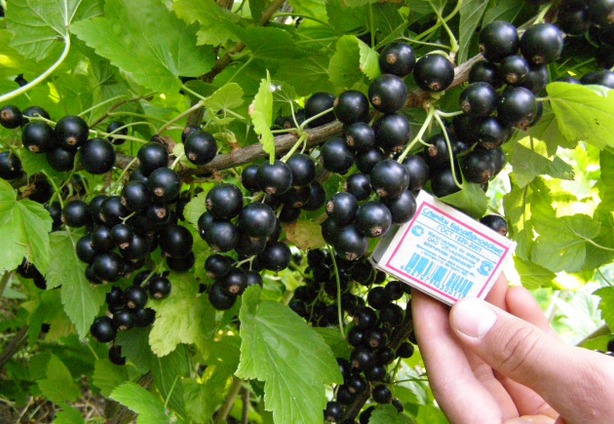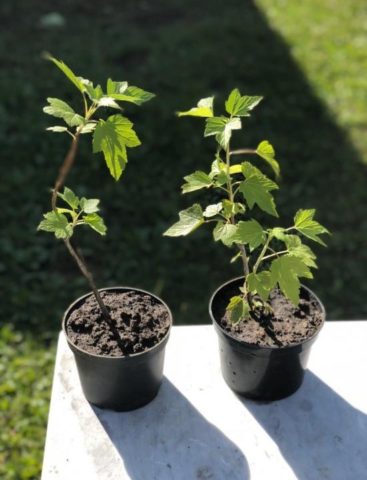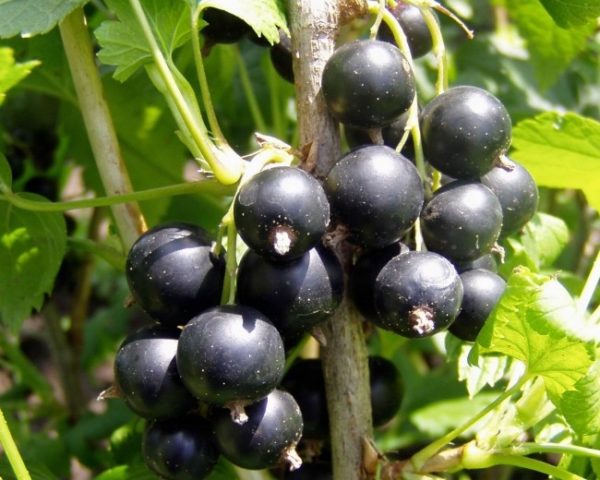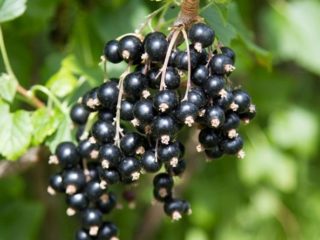Content
Black currant Oryol serenade was included in the State Register in 2000. It was bred in the Oryol region, the originator of the variety is the Federal State Budgetary Scientific Institution "VNII Selection of Fruit Crops".
Description of black currant Oryol serenade
The bush is medium-sized, the shoots grow compactly, forming a neat crown. Green leaf plates are five-lobed, wrinkled, of medium size, brightly colored flowers, fruit clusters are short. Flowering begins in May. The ripening period of berries is average - this is July or early August. The variety is self-fertile, there are female and male flowers on the bush.
Berries are medium in size, up to 1.9 g, with a black, shiny skin, oblong-rounded. The pulp is firm, sweet and sour, with a strong aroma. It contains 8% sugar and 3% acids. The taste of the berries is excellent, the tasting score is 4.5 points.
The currant variety Orlovskaya serenada is recommended for cultivation in several regions of Russia:
- Central;
- Volgo-Vyatsky;
- Central black earth;
- Middle Volga.
Oryol serenade currant is resistant to fungal diseases.
Characteristics
The characteristics of the variety include:
- drought resistance;
- frost resistance;
- yield;
- application area;
- advantages and disadvantages.
Drought resistance, frost resistance
The currant variety Orlovskaya serenade is winter-hardy. Transfers frosts down to -30 ° C. Since the roots are superficial, in the fall it is necessary to mulch the trunk circle and water-charging watering.
Variety yield
The yield of the currant variety Orlovskaya serenade is average. From one bush you can get 1.1 kg or from one hundred square meters - 100 kg. Due to the dry separation of the berries from the branch and dense pulp, they perfectly tolerate transportation.
When berries ripen, it is important to water and fertilize in a timely manner with complex fertilizers so that the crop does not become shallow and does not crumble from the bush. If the currant berries began to dry out, bake in the sun, the shoots may be damaged by the glass pan. This is easy to check by cutting off the drying shoot, if it has a black core, it means that a glassy larva lived inside. The branch is cut to a healthy tissue.
Application area
Blackcurrant berries Orlovskaya serenade have a universal purpose. They can be eaten fresh, made preserves and jams, frozen.
The Oryol serenade is rich in vitamins and mineral salts in black currant, it is sometimes called not a berry, but a medicinal culture. Vitamin C content - 217.1 mg / 100 g.
Pros and cons of the variety
The advantages of the Orlovskaya Serenade variety include:
- yield;
- great taste of berries;
- disease resistance;
- frost resistance.
It is suitable for growing in most regions of Russia.
The disadvantages include an extended period of fruiting.
Reproduction methods
The Orlovskaya Serenade variety is propagated by cuttings that remain after pruning the bush, or by layering. Description of rooting cuttings in the school:
- For reproduction, take shoots 15-20 cm long and not less than a pencil thick. Thin, green tops do not fit, they will freeze in winter, not having time to take root.
- Cuttings are harvested during autumn pruning. On the bush, five annual, two-year and three-year shoots are left to grow.
- Good cuttings are obtained from strong one-year and two-year shoots. The lower cut is made obliquely at a distance of 1 cm from the kidney. 2 cm recede from the upper kidney, and a cut is made at a right angle. Remove all leaves.
- The direction of the row in the school should be from north to south, then the seedlings will be evenly illuminated by the sun throughout the day. For planting, they dig a small groove 25-30 cm deep, and add 1 bucket of humus, 50 g of nitroammofoska and 1 tbsp. ash per one running meter.
- Half an hour before planting, the school is watered to a depth of 25 cm. Prepared currant cuttings are stuck into the moist soil at an angle of 45 °. The distance between the seedlings is left 10-15 cm in a row, the row spacing is made about 20 cm.
- After planting, abundant watering is carried out. When the moisture is absorbed and the soil settles a little, add some earth from above.
- For the winter, the school must be covered with straw, with a layer of 3-5 cm.
It is also easy to propagate currants by layering. They begin to lay shoots for the formation of layers in early spring, as soon as the buds awaken. To do this, use a hoe to make a small groove next to the bush. The extreme branch is placed in a groove, and pinned, covered with earth by 1 cm. The end of the branch is pinched to awaken the lateral shoots and form new seedlings. In the fall, young bushes can be dug up and planted in a new place.
Planting and leaving
Blackcurrant variety Orlovskaya serenade grows well on fertile, light soil, does not like clay, heavy, acidic soil. The bushes are undemanding to lighting, but in an open, sunny area, the yield will be greater.
The further development of the bush and the amount of harvest depends on the correct planting of black currants. One of the keys to success is the correct landing pattern:
- The row spacing is at least 1.8 m, and about 1.5 m is left between the seedlings in a row.
- You can plant Oryol serenade currants in October or April-May. In October, it is advisable to plant currants after leaf fall, until the frost begins, and in spring - before the leaves bloom.
- If the soil is fertile, the planting hole is made of medium size, about 40 cm deep and the same diameter. They bring into it: a bucket of well-rotted manure, 100 g of nitroammofoska, 1 tbsp. wood ash.
- It is advisable to plant the currant Oryol serenade with a 5-10 cm deep root collar.
In order for the planted currant to winter well, it is mulched with humus. When frosts come, you can additionally cover the trunk circle with hay.
Follow-up care
In the spring, it is necessary to remove all weeds around the bush, loosen the soil. Currant Oryol serenade loves moisture. On dry and hot days, 3-4 buckets of water will need to be poured under one adult bush.
After watering, the bushes are mulched with humus, nutritious soil or peat. The following components are added to each bucket of mulch:
- 2 tbsp. l. nitrophosphate or superphosphate with potassium sulfate - for feeding;
- 1 tbsp. wood ash or 2 tbsp. l. chalk - for alkalizing the soil;
- 1 tbsp. l. dry mustard top - for pest prevention.
For a large currant bush Orlovskaya serenade you need 3 buckets of mulch. To make the berries larger, during flowering it can be fed with potato peelings. For this, the cleaning is laid out around the bush in the root circle, and sprinkled with a layer of mulch.
Cutting off all unnecessary, they form the crown so that it is not strong
thickened, weak and broken shoots are removed in the spring. Summer currant pruning is carried out after harvest. During it, 2-3-year-old branches are cut, leaving only strong, young shoots. This procedure speeds up fruiting the next year. Strong young shoots will give a good harvest in spring. The cut is made over a strong kidney that looks outward.
In autumn, it is advisable to carry out water-charging irrigation so that the bushes endure the winter well, and mulch the tree trunk circle. The currant Orlovskaya serenade has fibrous roots located close to the surface of the earth, a layer of mulch will help the plant to endure frost perfectly.
Pests and diseases
With good care, currants grow in one place for 15-17 years. In spring and autumn, after leaf fall, it is advisable to prevent the most common diseases:
- anthracnose or brown spot;
- septoria, white spot;
- powdery mildew.
For prophylaxis in the spring before flowering, treatment with copper-containing fungicides ("Amigo peak", "Bordeaux mixture") is used. In the future, spraying is repeated 3-4 times using modern drugs: "Skor", "Ridomil Gold", "Fitosporin", "Previkur".
For the prevention and control of pests, fungicides are used. The safest are drugs on a biological basis, for example, Fitoverm.
Conclusion
Black currant Orlovskaya serenade is suitable for growing in small household plots and industrial plantations. Due to the good quality of the berries, it is in demand in the market, and quickly pays for itself. The variety is easily propagated by cuttings, resistant to diseases and frost.












